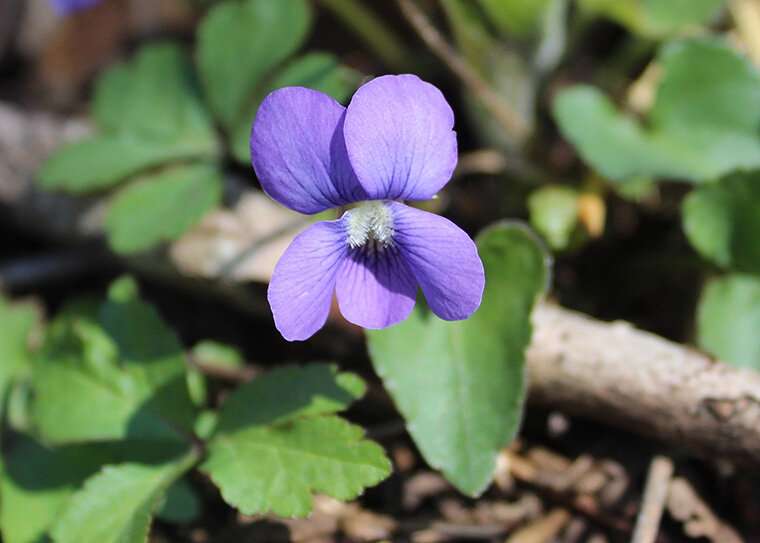Climate change is affecting when and how violets reproduce

In many Missouri backyards, a carpet of small purple or white violets is a sure sign of spring.
Research from Matthew Austin, a postdoctoral fellow with the Living Earth Collaborative at Washington University in St. Louis, has found that climate change is affecting how these common native flowers reproduce.
Violets reproduce both sexually, through cross-pollination of the showy flowers we're familiar with; and asexually, by self-seeding of less noticeable flowers that remain hidden near the base of the plant. This is called "mixed mating." Although environmental factors drive how much a plant reproduces sexually or asexually, no study had previously looked at the impact of climate change on mixed mating.
Austin and his co-authors studied blue violet specimens from the Missouri Botanical Garden's herbarium from 1875 to 2015 paired with temperature and precipitation data to see if flowering correlated with climate.
Among other findings, the scientists discovered that violets produced fewer showy flowers in environments with warmer temperatures and less rain, while those in cooler climates with more precipitation produced more showy flowers. As temperatures warm, violets are also blooming earlier in the year.
"It has been well documented that climate change is affecting the time of year that plants bloom," Austin explained. "By finding that climate change is associated with increased production of sexual flowers, relative to asexual flowers, in the common blue violet, this study reveals that climate change might be affecting not just when plants reproduce, but how plants reproduce."
The study was published in the American Journal of Botany.
More information: Matthew W. Austin et al, Climate change is associated with increased allocation to potential outcrossing in a common mixed mating species, American Journal of Botany (2022). DOI: 10.1002/ajb2.16021
Journal information: American Journal of Botany
Provided by Washington University in St. Louis




















